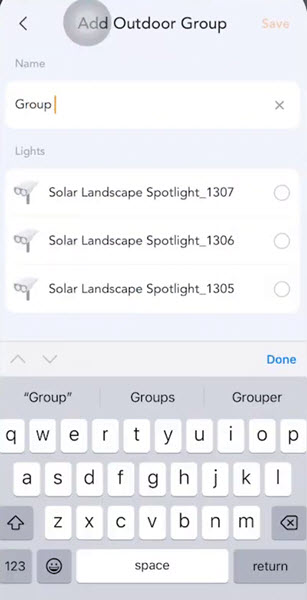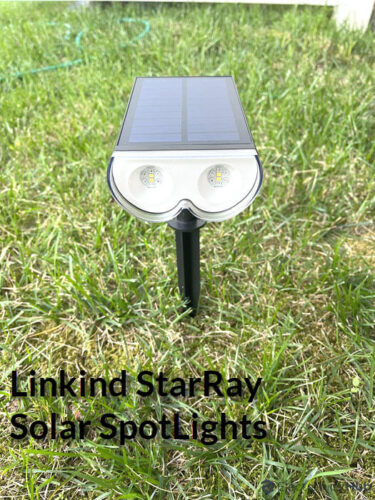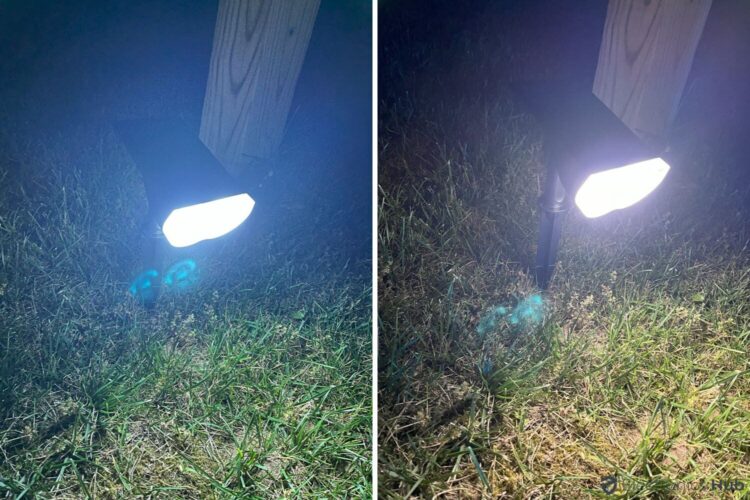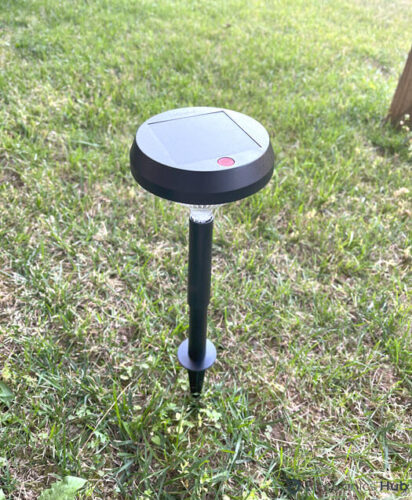Solar spotlights have revolutionized outdoor lighting. As the name suggests, they use solar energy to function. In its simplest form, solar spotlight consists of a solar panel, a battery, an LED bulb, and a sensor. During the day, the solar panel captures sunlight and converts it into electrical energy, which the battery stores. At night, the stored energy powers the LED bulb, providing bright and focused illumination.
These lights typically come with sensors that automatically turn the light on at dusk and off at dawn. The lack of wiring makes them easy to install in various locations, from gardens and driveways to patios and pathways. Solar spotlights have gained immense popularity among homeowners, landscapers, and urban planners. As they are powered by the sun, these lights do not rely on the electrical grid, reducing energy consumption and utility bills.
Solar spotlights come in several types including fixed, adjustable, motion-sensor, and smart. Irrespective of the type, they prove extremely useful in various scenarios. Homeowners often use them to enhance garden aesthetics by highlighting plants, trees, and decorative elements. They also illuminate pathways and driveways for safe navigation at night.
Recently, we got our hands on some smart solar spot lights from one of the sub-brands of AiDot; Linkind. They are the Linkind Smart Solar Spotlights, specifically the model SL5.These solar spotlights have a special set of RGBTW LEDs. By pairing them to your smartphone (with AiDot app), you can easily control the spotlights.
There are several more interesting features which we will discuss in this review of the Linkind Smart Solar Spotlights SL5. We have been using these lights for more than a week and we would like to share our thoughts on the build quality, ease of usage, lighting performance, different “smart” features, and many more. Read along to find out if these solar spotlights from Linkind are suitable for lighting up your garden.
Let us quickly unbox the package and take a look at its contents. We got the 6-pack variant. So, the contents will be specific to this option. There is also a 2-pack variant where you will still get all the components but the number will be small (suitable for 2 spotlights).

Opening the box, we get a user manual, which is good as you have to assemble these lights and the manual has all the necessary instructions for the same. Go through the guide before using the spotlights. Next, we have 6 units of the main solar spotlights in individual bubble wrap bags. Then we have 6 zip lock bags, each with a stake (the part that goes into the ground), a connecting rod that also doubles down as a wall mount bracket, and an adjuster turn knob.
Last but no least, we have 6 small plastic bags each with three dry wall anchors and three screws. These bits and pieces will help you mount the solar spotlights to a wall. That’s it for the unboxing. Let us continue with the design aspects of the lights.
The first thing that comes to mind when you hold the Linkind Smart Solar Spotlights in your hands is it has a very minimalistic design approach. Every piece of design element is functional and there is no element that is unnecessary or out of the place. On the top, we have the solar panel that is responsible for charging the battery. The main light assembly consists of two identical domes with 14 LEDs each. There is a PIR Motion Sensor between the two light modules. The plastic is ABS and the quality of the plastic is very good.

Below the unit, we have the mechanism to attach the unit to main support rod. The advantage of this mechanism is you get a knob screw with which you can adjust the position of the solar light at any desired angle and lock it in place. There is also a button on the bottom that acts as a ON/OFF switch as well as for pairing the solar lights with the smartphone app.
The Linkind Smart Solar Spotlights comes disassembled and in order to use it properly, you have to assemble the unit. When we say “assemble”, we don’t mean a ton of work. All you have to do is connect the center rod to the solar lights and tighten the knob screw.

The next step depends on how you want to use the lights. If you want to fix the lights to a wall, then this level of assembly is sufficient and you can proceed to mount the unit on a wall as the center connecting rod has mounting holes on it. You can use the dry wall anchors and screws to secure the unit to a wall.

Alternatively, if you want to insert the solar lights in your garden, then attach the ground stake to the center rod. The other end of the stake has a pointy edge that helps you push the unit into the ground.
The first thing we need to speak about the Linkind Solar Spotlight SL5 is its solar panel. It has a PET-coated monocrystalline solar panel with a power rating of 1.5W. While the power number may seem small, it is sufficient to recharge the small battery inside the unit. The advantage of the monocrystalline panel is that it has energy conversion rate up to 30%. Also, the entire unit is IP65 rated so you don’t have to worry about using it in sun, rain, or snow.

Coming to the LEDs, we have a total of 28 LEDs. The configuration is known as RGBTW, where the “TW” stands for tunable white. With the “RGB”, you can generate virtually 16 million colors. But the separate white section has color temperature adjustment ranging from 2700K to 6500K.
We have already spoken about mounting options i.e., wall mount or ground insert. What’s interesting is that with either of these mounting choices, you get 180° of vertical and 360° of horizontal adjustments.
There are several more features such as different lighting modes, grouping abilities, music sync, color presets, etc. We will take a look at these when we talk about the app connectivity features.
The whole assembling process (for all the 6 solar spotlights) took less than 10-minutes as we opted for ground insertion rather than wall mounting. We then placed the lights in our garden for a couple of days and allowed them to charge during daytime. After that we switched the lights on and they were running ever since.
So, how did the Linkind Solar Spotlights perform? If you read our assembly experiences, then it is clear that the whole process starting from assembly and installation to switching the unit on was very simple and hassle free. Even if you don’t have any prior experience with such lights, you can use them without significant effort.

By default, the spotlights come in off mode. All you have to do is press the red button at the bottom of the lights to turn them on. With the lights on, you can click the button to cycle through red, orange, yellow, green, blue, indigo, violet, 2700K, and 6500K colors. Yes. The Linkind Smart Solar Spotlights have tunable while light in addition to the normal RGB. We call this combination RGBTW. Without “smart” functionality, this is what we can do; turn the unit on or off and cycle between different color lights.
But if you want to explore the true capabilities of these solar lights, then you have to pair them with your smartphone and use the AiDot app. Sadly, you have to provide some personal information (e-mail) to use the app. Some might feel this step is unnecessary and this is not needed for controlling a device as simple as a solar spotlight. Nonetheless, if you want to unleash the full “smart” capabilities, then this is the only way.

That said, pairing process is very simple. All you have to do turn the lights on, enable Bluetooth on your smartphone (after installing the AiDot app), and long press the red button for about 5-seconds. As an indication that the lights are in pairing mode, they will cycle between warm light and cool light. After successful pairing, you can play with the app and the lights.
The first interesting feature of the app is that you can add lights to a group and control them collectively. The app allows you to add up to 32 individual lights in a group and you can create 8 such groups.
Without the app, all you can do is turn the lights on/off and cycle between some colors. But with the AiDot app, you can do a lot more. For instance, you can adjust the brightness, choose between 43 preset scenes, or create your own scene.

Next, we get color adjustments for white as well as RGB. In case of white, you can set the color temperature between 2700K (warm white) and 6500K (cool white). Coming to RGB, there is a color wheel where you can select any random color from a possible 16 million colors. If you enable microphone permissions to the app, then you can use the “Music” mode where the lights synchronize to the audio that your phone’s microphone captures.
There are three modes of operation for the Linkind Solar Spotlights. They are: Motion Mode, Luminance Detection, and Light Mode. In motion mode, as the name suggests, the lights make use of the motion detection sensor and activate if there is any movement in front of them. The lights will be normally off and when they detect any movement, the lights will turn on. In the app, you can select “Dim Light Mode” which will increase the brightness of the lights that are normally dim upon detection of movement. If you enable the “Security Alarm”, the lights will flash a bright red light when a person walks by. You can do this for individual spotlights or for the entire group.

In luminance detection mode, the spotlights make use of the light sensor on top of the unit (near the solar panel) to detect sunlight and turn the lights on from dusk to dawn. The lights will be off when there is sunlight. The light mode will make the lights on all the time, irrespective of movement of sunlight.
The SL5 are the “Smart” Solar Spotlights from Linkind. Apart from this, they also have a couple of interesting solar pathway lights in their line-up. The first are the Linkind StarRay Solar Spot Lights. They look and feel similar to these smart SL5 spotlights, but the difference is these aren’t smart lights.

You still get RGB LEDs but you can choose only 1 from the possible 8 colors. The brightness is adjustable between low and high (which directly impacts the working time). If you are looking for colorful pathway lights but without any smart features, then the Linking StarRay Solar Spot Lights are a good option.

Next in the line-up is the Linkind Solar Pathway Lights SL3. In contrast to the previous two models, the SL3 are a simple and no nonsense warm white solar lights.

You can toggle the lights between low and high brightness and additionally you can also set them to breathing mode. If you want the simplest pathway or driveway lights, then the Linkind Solar Pathway Lights SL3 are a good choice. Both these alternatives to SL5 can operate as dusk to dawn lights automatically.

The price of the 2-pack variant of the Linkind Smart Solar Spotlight SL5 is $44.99 while it is $125.99 for the 6-pack variant. If you are planning to light-up your garden or yard, then we believe the 6-pack option is reasonable. But if you want to try and test the performance of these lights, then the 2-pack is the best option.
Overall, we really liked the Linkind Solar Spotlight SL5. They are very simple lighting units physically but pack a pretty punch in terms of smart features. The combination of monocrystalline solar panel and RGBTW LEDs is good for illuminating gardens, driveways, yards, and pathways without worrying about power or utility bill.
While you can use these lights without app connectivity, the functionality is very limited. But with AiDot app, you can unleash a plethora of features such as scene presets, music mode, lighting colors (both RGB and white), and many more. The app also allows you to set the operation mode between motion detection, dusk to dawn, or always on.
If you are looking for a decent set of solar lights to cover your garden or driveway, then the Linkind SL5 Smart Solar Spotlights are a very good choice.
Get great content that you love. No ads or spams, we promise.
How To Guides
Product Reviews
For Students
Copyright © 2024 Electronicshub.org